Putting me back together with a prosthetic eye
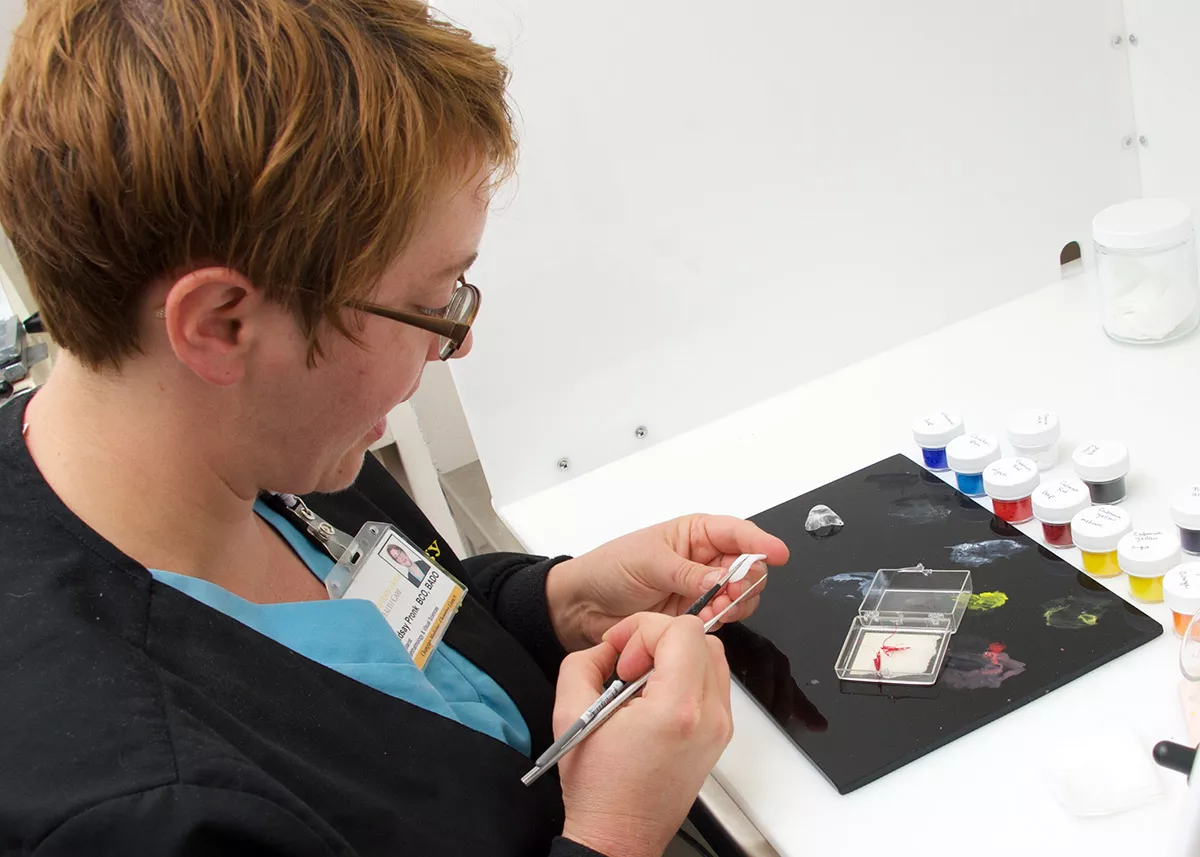
“I had a patient tell me that I put him back together, because it felt like he was missing a part of him,” says Lindsay Pronk, an ocularist at University of Iowa Hospitals & Clinics. She spends her days creating and fitting prosthetic eyes.
A trauma
Another of Lindsay’s patients, Deb Floyd, sustained trauma to her right eye after being assaulted at a shopping center in Michigan more than 25 years ago. The trauma caused retinal detachment, and while she could initially still see with both eyes, the intraocular pressure started to rise.
Over the next five years, Deb had a series of procedures to keep the pressure down, but by 1994, she had lost all sight in that eye. Twenty years passed before she decided to have that eye removed and get a prosthetic eye.
By that time, Deb was living in Iowa City, and that’s where she met Lindsay. At the time, Lindsay was working at a different clinic where Deb got her first prosthetic eye. But when it came time to be fitted with a new prosthetic, Lindsay had moved to UI Hospitals & Clinics, where she launched the Ocular Prosthetics Service in the summer of 2016.
A new eye
Patients may have had an eye removed and need a prosthetic eye for a variety of reasons, including cancer, accidents, developmental issues (in children), glaucoma, or serious infections.
The shape of the prosthetic eye is not actually spherical, as one may expect. When a patient’s eyeball is surgically removed, a spherical implant is permanently attached to the back of the eye socket. The back of the prosthetic eye is made to fit perfectly over the implant already in the eye socket.
“I don't often remove the prosthetic eye. It is kind of just like my own,” Deb says.
When she does remove it (every couple of months to clean it), she describes it similar to inserting a contact lens: “It’s larger and thicker, but it involves just moving the eyelid so you can slip it up under your upper lid, and then kind of pull the lower lid around it.”
Making of an eye: The process
1. Taking an impression
First, Lindsay makes an impression of the eye socket by injecting alginate into the space—the same material used to make dental impressions. It takes less than a minute to set.
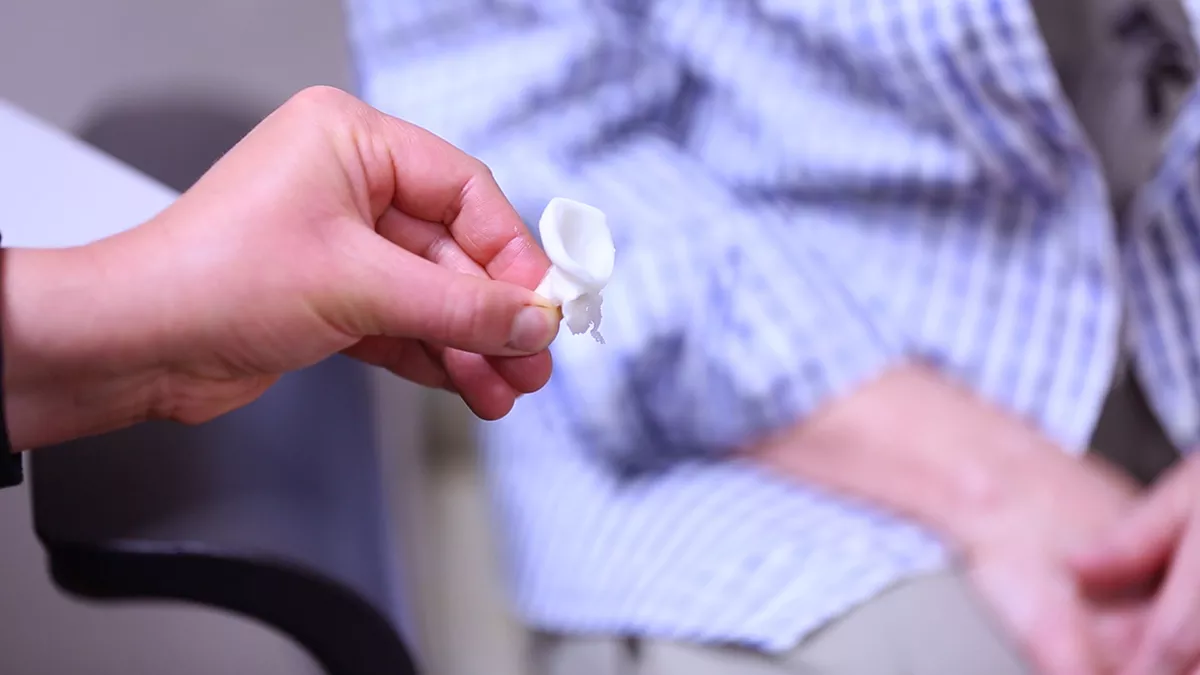
2. Creating the mold
Next, Lindsay makes a mold around the impression. Liquid wax is poured into the empty mold to make a wax replica of the eye. A plastic iris is attached to the replica and is placed in the eye socket to ensure correct direction of gaze and the proper fit, symmetry, and comfort. The wax is adjusted as necessary, and when the fitting is complete, a second mold is made around the wax replica.
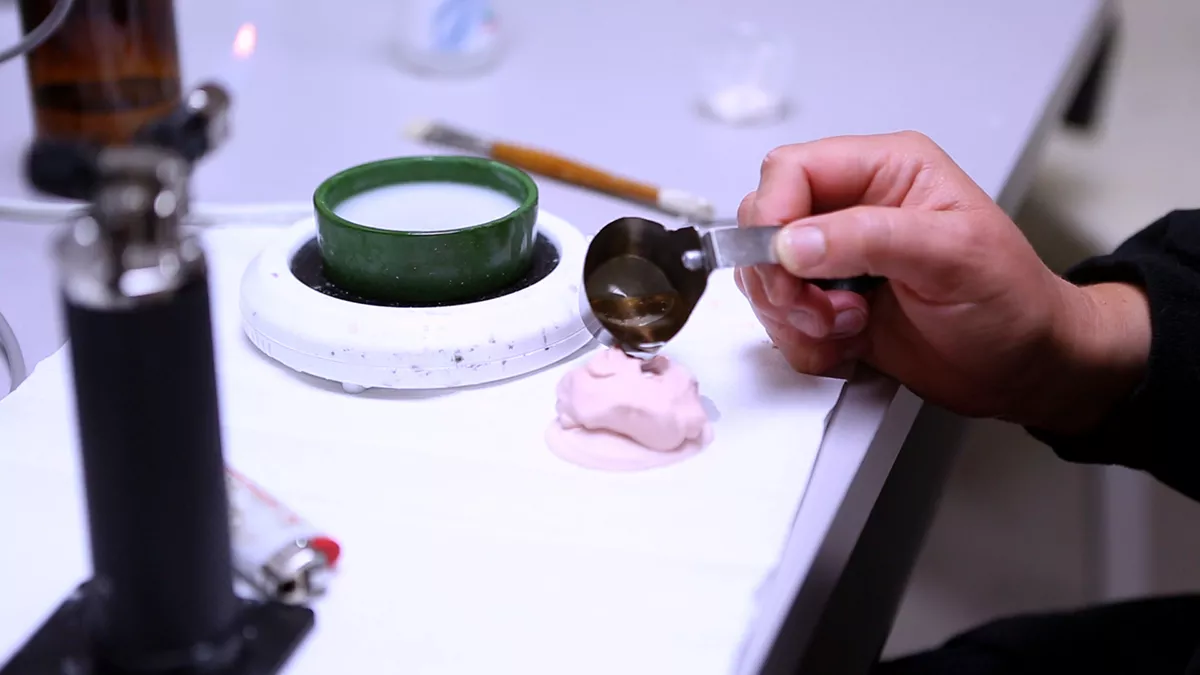
3. Creating the acrylic eye
A white polymer mixture is placed into this mold, compressed, and cooked for 35 minutes to create the acrylic eye, which is then trimmed and polished.
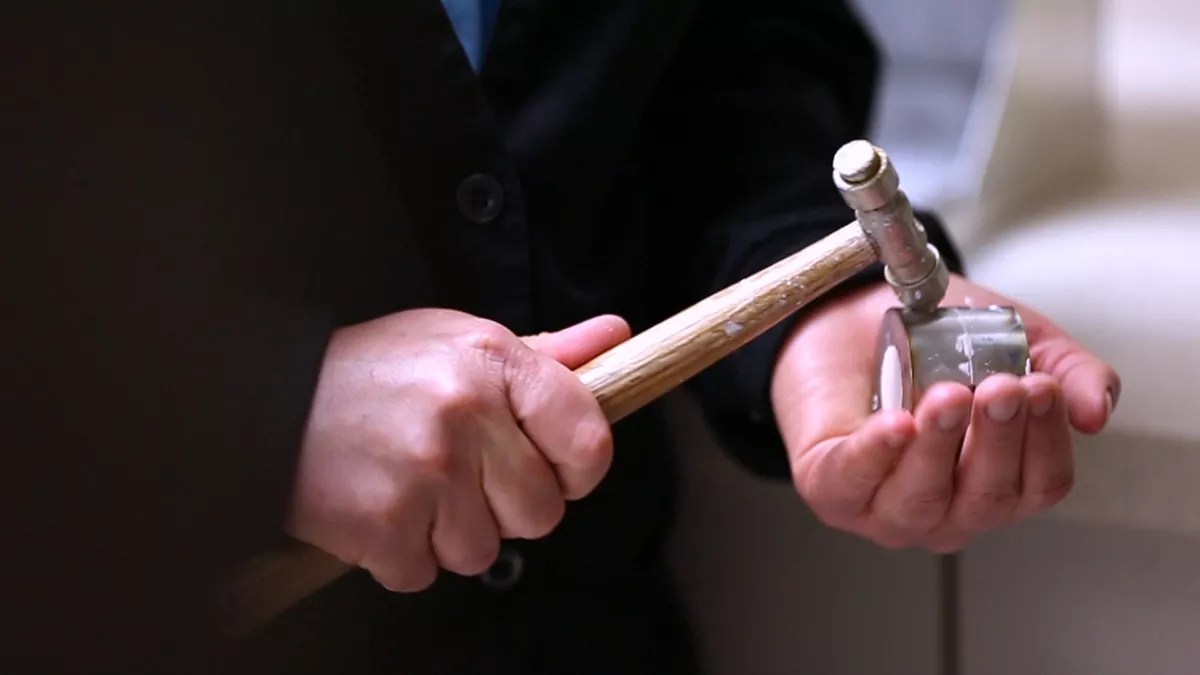
4. Decorating the prosthetic
Lindsay creates “veins” on the surface using red cotton thread covered by a layer of clear plastic, and the prosthetic eye is cooked again. Lindsay then spends three to four hours painting the prosthesis using multiple layers and colors of paint to give the iris depth and to match the patient’s other eye.
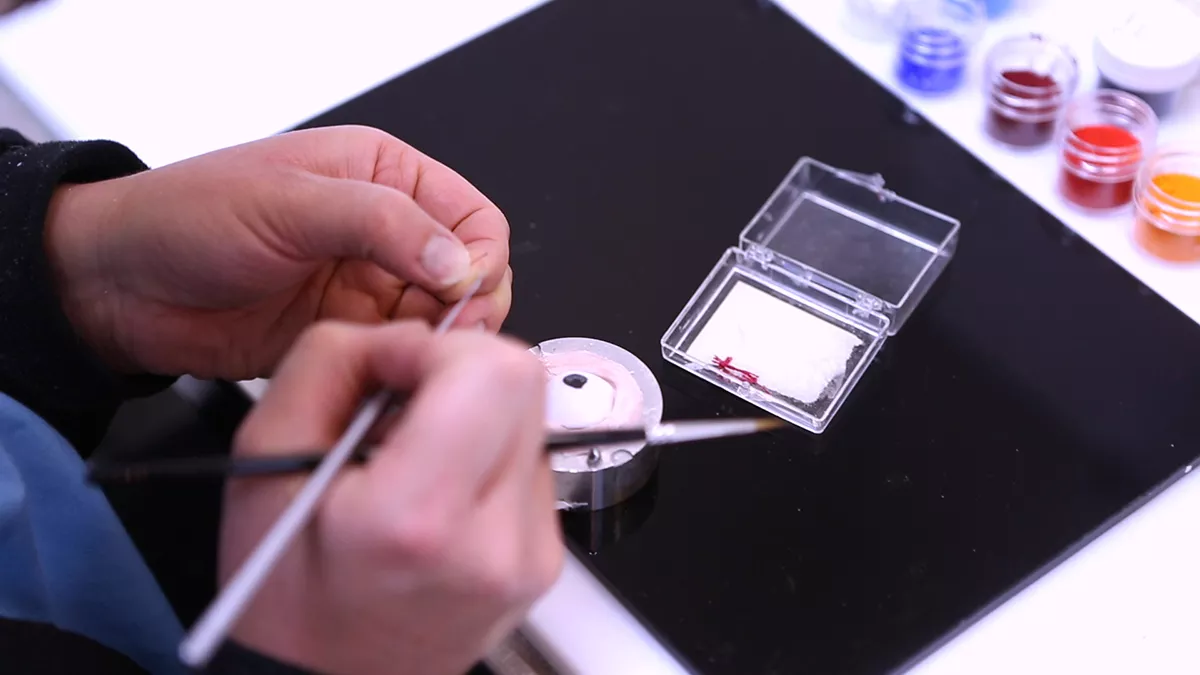
5. Fine tuning
Throughout the process, Lindsay makes tiny adjustments to get just the right look and feel for the patient. She ensures proper curvature, a natural-looking gaze, and precise symmetry to the other eye, both in shape and coloring.
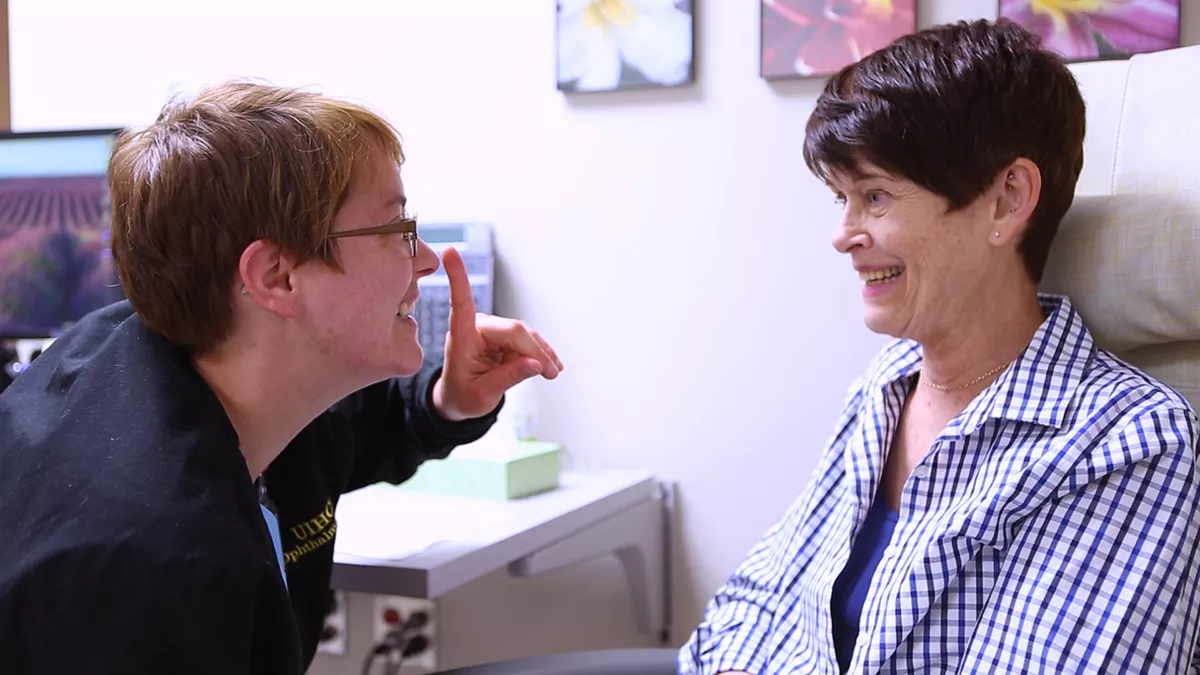
6. Polishing
When both Lindsay and the patient are happy with the prosthesis, it is placed in a water bath for 90 minutes then given a final trim and polish.
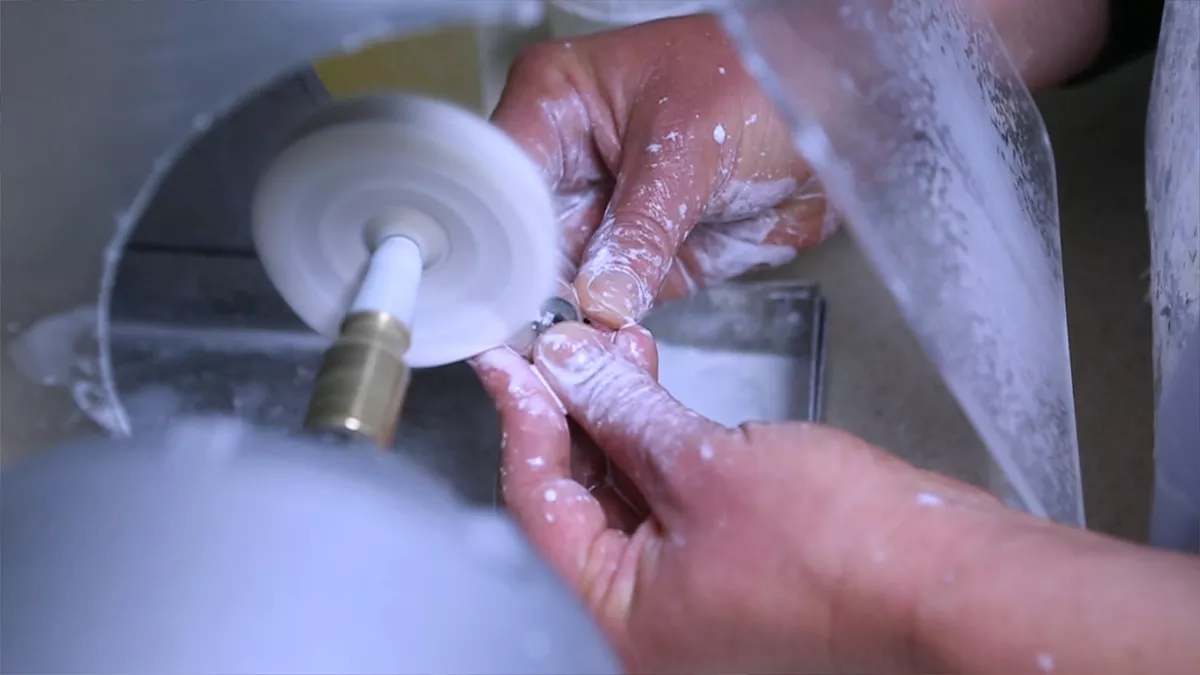
After the whole process, Deb says, “I can't even imagine not doing it. I am surprised I didn't choose to have this done a number of years ago.”